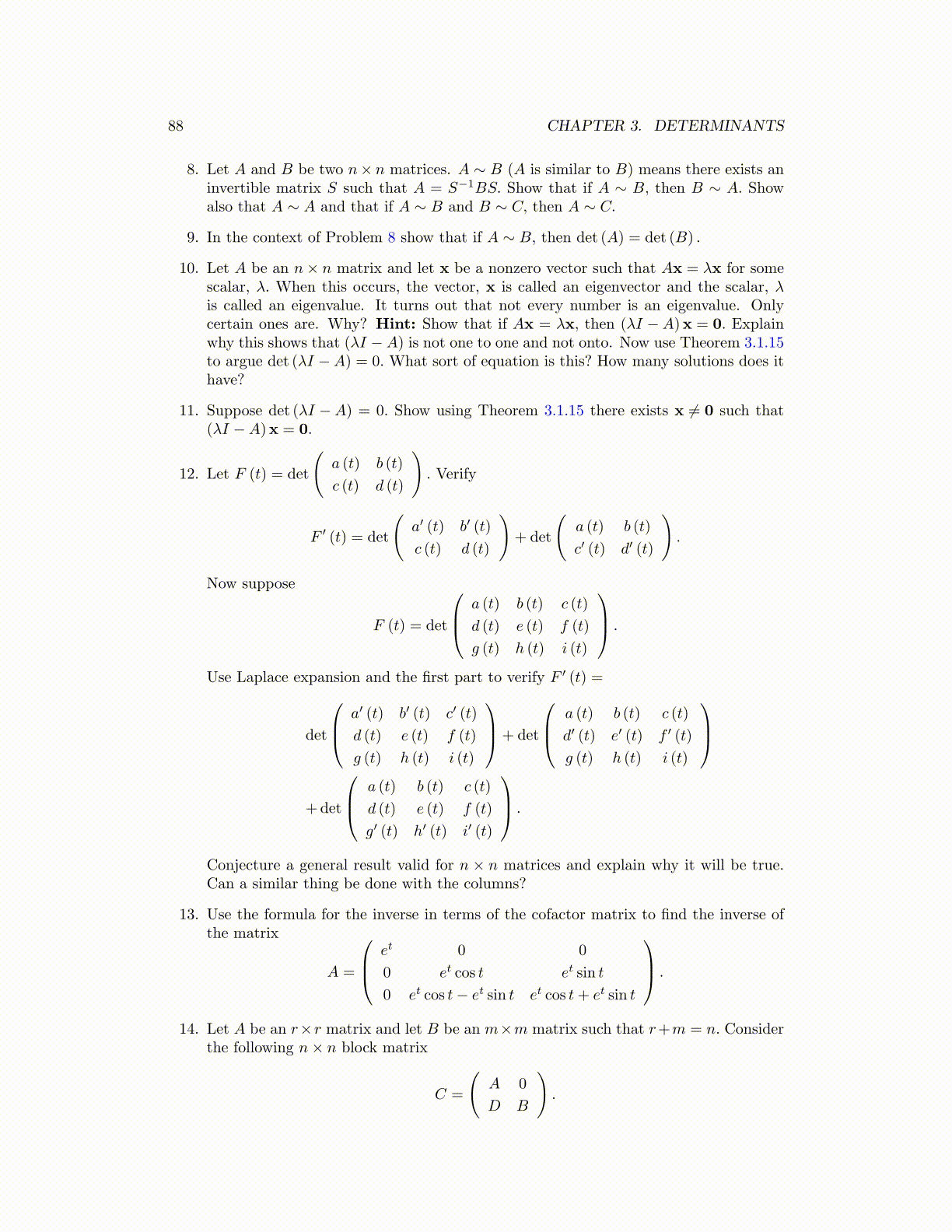
88 CHAPTER 3. DETERMINANTS
8. Let A and B be two n× n matrices. A ∼ B (A is similar to B) means there exists aninvertible matrix S such that A = S−1BS. Show that if A ∼ B, then B ∼ A. Showalso that A ∼ A and that if A ∼ B and B ∼ C, then A ∼ C.
9. In the context of Problem 8 show that if A ∼ B, then det (A) = det (B) .
10. Let A be an n× n matrix and let x be a nonzero vector such that Ax = λx for somescalar, λ. When this occurs, the vector, x is called an eigenvector and the scalar, λis called an eigenvalue. It turns out that not every number is an eigenvalue. Onlycertain ones are. Why? Hint: Show that if Ax = λx, then (λI −A)x = 0. Explainwhy this shows that (λI −A) is not one to one and not onto. Now use Theorem 3.1.15to argue det (λI −A) = 0. What sort of equation is this? How many solutions does ithave?
11. Suppose det (λI −A) = 0. Show using Theorem 3.1.15 there exists x ̸= 0 such that(λI −A)x = 0.
12. Let F (t) = det
(a (t) b (t)
c (t) d (t)
). Verify
F ′ (t) = det
(a′ (t) b′ (t)
c (t) d (t)
)+ det
(a (t) b (t)
c′ (t) d′ (t)
).
Now suppose
F (t) = det
a (t) b (t) c (t)
d (t) e (t) f (t)
g (t) h (t) i (t)
.
Use Laplace expansion and the first part to verify F ′ (t) =
det
a′ (t) b′ (t) c′ (t)
d (t) e (t) f (t)
g (t) h (t) i (t)
+ det
a (t) b (t) c (t)
d′ (t) e′ (t) f ′ (t)
g (t) h (t) i (t)
+det
a (t) b (t) c (t)
d (t) e (t) f (t)
g′ (t) h′ (t) i′ (t)
.
Conjecture a general result valid for n × n matrices and explain why it will be true.Can a similar thing be done with the columns?
13. Use the formula for the inverse in terms of the cofactor matrix to find the inverse ofthe matrix
A =
et 0 0
0 et cos t et sin t
0 et cos t− et sin t et cos t+ et sin t
.
14. Let A be an r×r matrix and let B be an m×m matrix such that r+m = n. Considerthe following n× n block matrix
C =
(A 0
D B
).